CAPACITY BUILDING FOR BIODIVERSITY AWARENESS
Submitted in partial fulfilment of the requirements of the degree of Bachelor of Architecture
By Vikrant V. Chaudhari
Exam Seat No. AR-15-009
GUIDE: Prof. Swati Gupta

ADITYA COLLEGE OF ARCHITECTURE Mumbai Mumbai University
2019-20
ABSTRACT
India is one of the 12 megadiverse countries in the world, with variety of Flora and fauna and about 1,15000 species of plants & animals with great diversity of natural ecosystems like Grasslands, Desserts, Ghats , Forests , Mountains, Marine, Terrestrial etc. Over the years biodiversity has been of great importance to humans because it provides food, shelter, clothing, etc . But nowadays Biodiversity has reduced because of Destruction of forests, over-exploitation of resources, shifting cultivations, Urbanization, industrialisation, illegal activities etc.
According to a report "The Age of Extinction "there are 1 million species which are threatened and 50% of animals have been extinct since 1970. This leads to strategize the existing biodiversity and conserve them for sustainable future.
Hence, the concerned design proposal aims at creating a sustainable biodiversity institute which provides training, academic knowledge and advisory in conservation of biodiversity.
~ i ~ TABLE OF CONTENTS 1. INTRODUCTION .............................................................................................................1 1.1 Aim 2 1.2 Objectives ........................................................................................................................2 1.3 Hypothesis 2 1.4 Research Questions..........................................................................................................2 1.5 Scope and limitations 2 2. METHODOLOGY ............................................................................................................3 3. LITERATURE REVIEW 4 3.1 Biodiversity loss...............................................................................................................4 3.2 Articles/News-reports related to Biodiversity loss 5 3.3 Articles/News-reports related to problems caused by biodiversity loss ..........................9 3.4 Why Conserve Biodiversity? 11 3.5 How did the concept of Biodiversity Hotspot begin? 12 3.6 Organization which conserve biodiversity hotspots Internationally 13 3.7 The major biodiversity hotspots in India.......................................................................14 a) The Western Ghats (UNESCO World Heritage Site) 14 b) Himalaya 15 c) Indo-Burma..............................................................................................................15 d) Sundalands 15 3.8 Existing Forest cover in India........................................................................................16 3.9 Existing Forest cover in Maharashtra 17 3.10 Hotspots in Mumbai.....................................................................................................18 a) Sanjay Gandhi National Park (SGNP) 19 b) Mangroves and Forests............................................................................................19 c) Aarey 19 d) Maharashtra Nature Park (MNP).............................................................................19 e) Elephanta Island 19
~ ii ~ f) Powai Lake and IIT campus 20 g) Palm Beach Road.....................................................................................................20 h) Raj Bhavan 20 i) Bhandup Pumping Station .......................................................................................20 j) Mahalaxmi Race Course 20 k) Ranibaug..................................................................................................................20 l) Mahul, Sewri, Palm Beach Road and Thane Creek 20 m) Chhatrapati Shivaji Maharaj Vastu Sangrahalaya and Jijamata Udyaan.............20 4. FOREST RESEARCH INSTITUTE 21 4.1 History of forests and wildlife institutes........................................................................21 4.2 Importance of Institutes in Conservation 21 4.3 Forest Research Institute in India...................................................................................22 5. CASE STUDY 24 5.1 Forest Research Institute................................................................................................24 a) Aim and objectives of the Institute 25 b) Programs..................................................................................................................26 c) Architecture 27 d) Research, Activities and Achievements 31 e) How to reach 32 5.2 Wildlife Institute of India 33 a) Mission 34 b) Aims and objectives 35 c) Courses offered in the institute................................................................................35 d) Programs 35 e) Various departments in the institute.........................................................................36 5.3 California Academy of Sciences 38 a) Main Lobby..............................................................................................................41 b) Piazza 42 c) Grand Hall................................................................................................................43
~ iii ~ d) Swamp 44 e) East & West Halls....................................................................................................45 f) Osher Rainforest 46 g) Kimball Natural History Museum............................................................................46 h) Steinhart Aquarium 47 i) Moss Room..............................................................................................................48 j) Morrison Planetarium 49 k) Tusher African Hall .................................................................................................50 l) Research & Training Facility 51 m) Lecture Hall .........................................................................................................53 n) Board Room 54 o) Living Roof..............................................................................................................55 p) East Garden 56 q) Terrace.........................................................................................................................56 5.4 Comparative table of case studies 59 6. VARIOUS SUBJECTS UNDER FORESTRY EDUCATION .......................................60 6.1 ANTHROPOLOGY 60 a) Scope, Job Opportunities 60 6.2 BOTANY 61 a) Botany courses 61 b) Subjects 61 c) Scope, Job Opportunities 61 6.3 ENTOMOLOGY...........................................................................................................62 a) Scope, Job Opportunities 62 6.4 HERPETOLOGY ..........................................................................................................63 a) Scope, Job Opportunities 63 6.5 ICHTHYOLOGY ..........................................................................................................63 a) Scope, Job Opportunities 63 6.6 ZOOLOGY & GEOLOGY............................................................................................64
~ iv ~ a) Scope, Job Opportunities 64 6.7 ORNITHOLOGY ..........................................................................................................64 6.8 MAMMALOGY 64 7. SITE STUDY ..................................................................................................................65 8. DESIGN PROGRAMS 71 8.1 Educational programs ....................................................................................................71 8.2 COMMERCIAL 72 8.3 Tourism..........................................................................................................................73 9. AREA OF PROGRAMS 76 10. CONCLUSION............................................................................................................78 11. BIBLIOGRAPHY 79
LIST OF FIGURES
~ v ~
Figure 1 : Map indicating world’s 35 hotspots 12 Figure 2 : Map indicating India’s 4 hotspots 14 Figure 3 : Forest cover in India 16 Figure 4 : Map showing Forest cover in Maharashtra 17 Figure 5 : Forest cover comparison among the states in Maharashtra 17 Figure 6 : Hotspots in Mumbai 18 Figure 7 : Map indicating forestinstitutes in India 23 Figure 8 : Forest research institute , Dehradun 24 Figure 9 : Computer Lab 26 Figure 10 : Laboratories 26 Figure 11 : Library 26 Figure 12 : Meeting room 26 Figure 13 : Lecture hall 26 Figure 14 : Museum 26 Figure 15 : The main facade of the building 27 Figure 16 : parking and ticket counter 27 Figure 17 : Pediment 28 Figure 18 : Sideview 28 Figure 19 : Sizing of windows in elevation 28 Figure 20 : Sizing of windows in elevation 28 Figure 21 : Interior spaces 29 Figure 22 : Indoor space front view 29 Figure 23 : Plan of the building 29
~ vi ~ Figure 24 : Internal Courtyard 30 Figure 25 : Central Courtyard 30 Figure 26 : Vaults made of bricks 30 Figure 27 : Elevation 30 Figure 28 : Groin vault 30 Figure 29 : Domed tower 30 Figure 30 : Biodiversity in the campus 31 Figure 31 : Research activities 31 Figure 32 : Biodiversity park 31 Figure 33 : Group activity 32 Figure 34 : Species in campus 32 Figure 35 : species in campus 32 Figure 36 : Wildlife institute of India, Dehradun 33 Figure 37 : Wildlife institute of india, Campus 34 Figure 38 : Diversity around campus 34 Figure 39 : Meeting room 35 Figure 40 : Seminar hall 35 Figure 41 : Auditorium 35 Figure 42 : Computer lab 35 Figure 43 : Research lab 36 Figure 44 : Forensic lab 36 Figure 45 : Dining hall 36 Figure 46 : Research lab 36 Figure 47 : California Academy of science 38
~ vii ~ Figure 48 : Indoor programs of California Academy of science 38 Figure 49 : Plan of the building 39 Figure 50 : Section 39 Figure 51 : Section and internal layout plan 40 Figure 52 : Lobby space 41 Figure 53 : Reception and waiting area plan 41 Figure 54 : Piazza 42 Figure 55 : Plan of Piazza 42 Figure 56 : Skylight roof 43 Figure 57 : Section 43 Figure 58 : Ground hall plan 43 Figure 59 : Swamp 44 Figure 60 : Observation desk 44 Figure 61 : Plan of the swamp 44 Figure 62 : Plan of Swamp ( East and West Pavilion) 45 Figure 63 : Osher Rainforest section 46 Figure 64 : Osher rainforest 46 Figure 65 : Museum 46 Figure 66 : Exhibition 46 Figure 67 : Steinhart Aquarium 47 Figure 68 : Steinhart Aquarium 47 Figure 69 : Steinhart Aquarium Plan 47 Figure 70 : Moss Room 48 Figure 71 : Stairway to Museum 48
~ viii ~ Figure 72 : Moss room plan 48 Figure 73 : Morrison Planetarium 49 Figure 74 : Morrison Planetarium 49 Figure 75 : Plan of Planetarium 49 Figure 76 : Lecture in african hall 50 Figure 77 : wildlife dioramas 50 Figure 78 : African hall plan 50 Figure 79 : Research area 51 Figure 80 : Collection of specimens 51 Figure 81 : Research and training area 51 Figure 82 : Research area 52 Figure 83 : Meeting area for researchers 52 Figure 84 : Collection of specimens 52 Figure 85 : Lecture hall 53 Figure 86 : Lecture hall 53 Figure 87 : Lecture hall plan 53 Figure 88 : Board room 54 Figure 89 : Board room 54 Figure 90 : Board room plan 54 Figure 91 : Living room 55 Figure 92 : Living room 55 Figure 93 : Roof plan 55 Figure 94 : Eastern garden seating 56 Figure 95 : Eastern garden seating 56
~ ix ~ Figure 96 : Plan 56 Figure 97 : Section 56 Figure 98 : Terrace cafe 57 Figure 99 : Terrace plan 57 Figure 100 : Section and elevation 58 Figure 101 : Climatic data 65 Figure 102 : Herbal shop 67 Figure 103 :Herbal shop 67 Figure 104 : Roof farming 67 Figure 105 : Urban farming 67 Figure 106 : Forest products 67 Figure 107 : Forest products 67 Figure 108 : Natural history museum 68 Figure 109 : Natural history museum 68 Figure 110 : Dioramas 68 Figure 111 : Dioramas 68 Figure 112 : Coral Aquarium 68 Figure 113 : Aquarium 68 Figure 114 : Ecological pond 68 Figure 115 : Ecological pond 68 Figure 116 : Aquascape exhibition 69 Figure 117 : Aquascape exhibition 69 Figure 118 : Bonsai exhibition 69 Figure 119 : Bonsai exhibition 69
~ x ~ Figure 120 : Botanical landscape 69 Figure 121 : Urban landscape 69 Figure 122 : Wildlife photographic 70 Figure 123 : Wildlife photographic 70
LIST
~ xi ~ LIST OF TABLE Table 1 : Various forest institutes in India 23 Table 2 : Comparative analysis of institutes 59 Table 3 : List of Programs 71 Table 4 : List of Programs 72
NGT National Green Tribunal SGNP Sanjay Gandhi National Park IUCN International Union for Conservation of Nature CI Conservation International BNHS Bombay National History Science ICFRE Indian Council of Forestry Research and Education UNESCO United Nations Educational, Scientific and Cultural organizations
OF ABBREVIATIONS
1. INTRODUCTION
The word Biodiversity originates from the Greek word “Bios” which means Life and Latin word “Diversitas” which means Diversity or Difference. The whole word “Biodiversity “means Variations of life forms found on earth.
Ecosystem is a geographic area where plants, animals and other organisms along with their habitat, weather conditions and surrounding landscapes form a complex system in which the living thing is one component of the ecosystem which is known as biodiversity.
Ecosystem and biodiversity are interdependent on each other for a balanced functioning of the system. Biologists most often define biodiversity as the “totality of genes, species and ecosystems of a region. Biodiversity includes three main types
1. Genetic Biodiversity
2. Species Biodiversity
3. Ecological Biodiversity
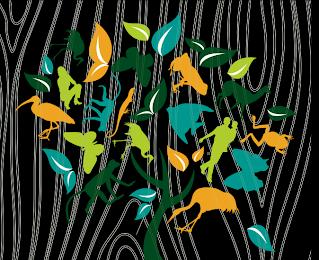
From early civilization the Biodiversity has been an integral part of human society. Biodiversity in varied forms has been providing the needs of the humans from thousands of years. It has great importance for satisfying human needs like Clothing, shelter, medicinal use, food etc. But gradually over the years it has declined rapidly due to destruction of forests, overexploitation of resources, shifting cultivation, urbanization, industrialization, soil degradations, climatic changes, diminishing green cover etc.

1
1.1 Aim
The main aim of the project is to build a sustainable research and educational institute which provides a better understanding towards the biodiversity and forestry knowledge, which helps in Conservation Strategies of Biodiversity
1.2 Objectives
• How can one architecturally develop a site without impacting the present biodiversity adversely?

• Creating an informative awareness about the richness of biodiversity and also the potential harm of the biodiversity loss to the citizens.
• Institute which undertakes and promotes biodiversity research, education, and provides sustainable management with special focus on Northern- Western Ghats.
1.3 Hypothesis
Biodiversity institute which aims at providing research and education with scientific advices/support to higher authority level and getting involved in the decision-making policies regarding the conservation of Biodiversity.
1.4 Research Questions
• Why is it important for one to understand and learn about biodiversity?
• How can an architect intervene in such sensitive zones like hotspots without disrupting the existing life forms adversely?
• What is Biodiversity research institute and what does it offer?
• How can architecture along with other programs can offer to the biodiversity and forestry education?
• What kind of spaces does one need for a biodiversity institute? And different programs required for it.
1.5 Scope and limitations
• The scope of the research is to understand the importance of biodiversity and forestry education at Master’s and PhD level.
• The study is limited to understand the biodiversity hotspots in Mumbai, Western Ghats.
2
2. METHODOLOGY
● Studying and researching about the various causes for biodiversity loss and why there is a need to conserve them?
● Studying the Hotspots in the world and in India
● Organizations which conserve the Biodiversity hotspots.
● Studying the Green zones and Forest land of India.
● Details of type of biodiversity found in Mumbai’s Hotspot
● Biodiversity Institutes all over India and various programs required.
● Case study and comparative study on Biodiversity institutes Internationally and nationally.
● Site selection, justification and analysis.
● Listing the design program with areas.
Biodiversity

•Variouscausesfor biodiversitylossandWhy doweneedtoconserve them?
Biodiversity Hotspots
•Hotspotsallover worldandhow didtheconcept ofHotspotbegin? Institutes
•Howdoes educationand Conservation gohandin hand?
Site Selection
3
3. LITERATURE REVIEW
3.1 Biodiversity loss

There are various reasons for biodiversity loss but majorly it has lost due to following broader reasons
• Natural causes
• Human interventions
• Introduction of exotic species and genetically modified organisms
• Pollution
• Climate change
Human Interventions
India, with its growing population is undergoing rapid urbanization. Large infrastructural and industrial projects are coming up with more people migrating towards the cities for employment facilities, more luxury and hence more development takes place (In 2010, India accounted for 11% of the world’s urban population with 377 million people living in cities Yet by 2031, 15% of the world’s urban population will come from India, with as many as 600 million people living in Indian cities (United Nations 2011). Changing lifestyle of people with increasing income both in rural and urban plays an impact on biodiversity.
4

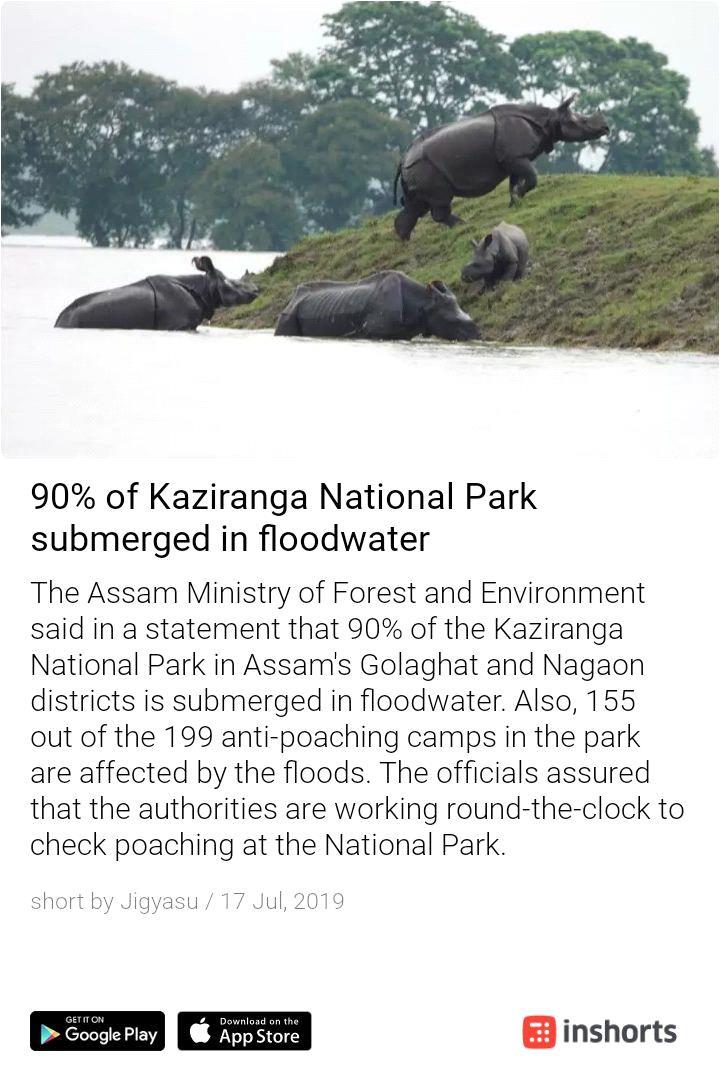


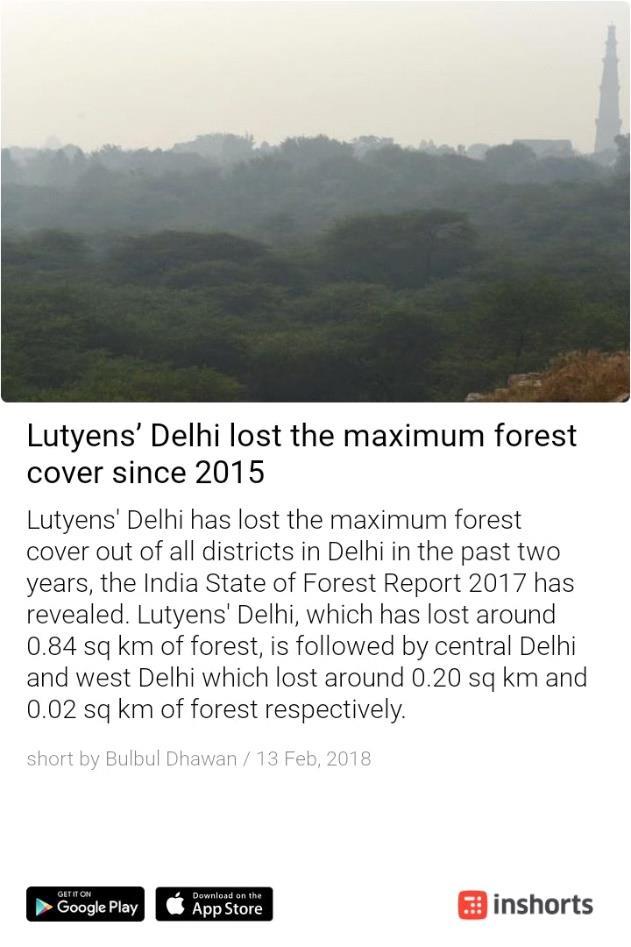
5 3.2
Articles/News-reports related to Biodiversity loss

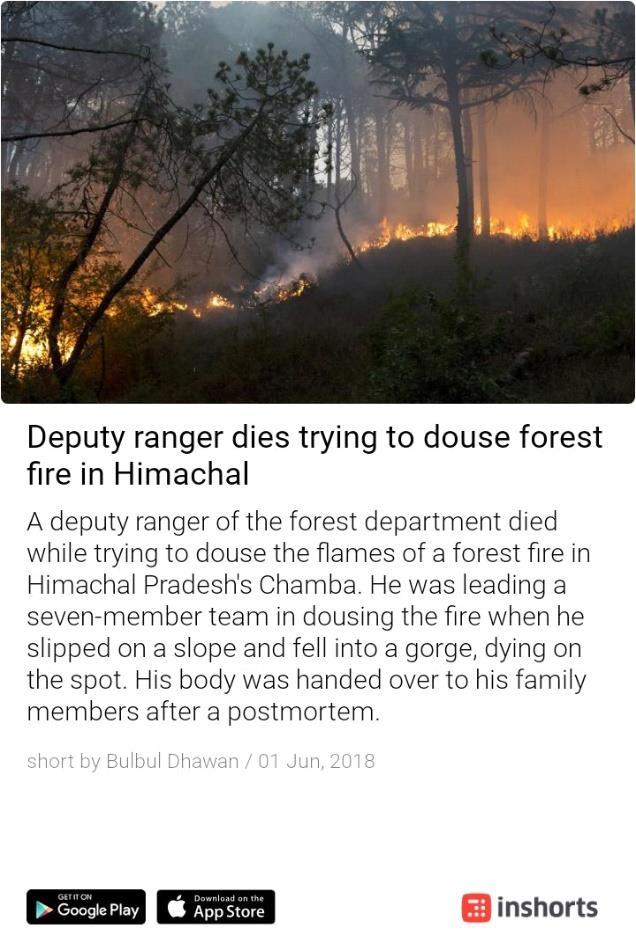



6





7

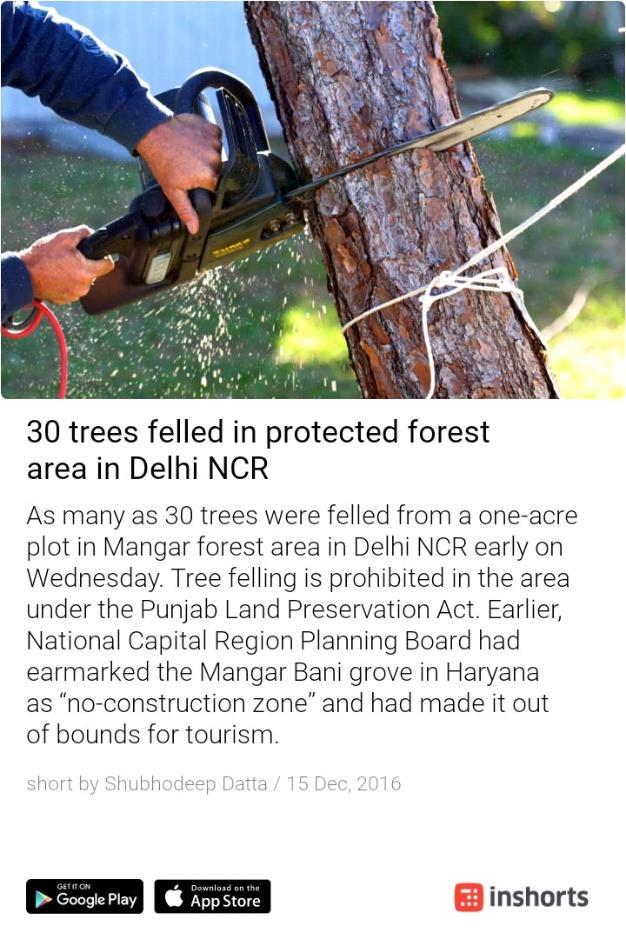


8
3.3 Articles/News-reports related to problems caused by biodiversity loss
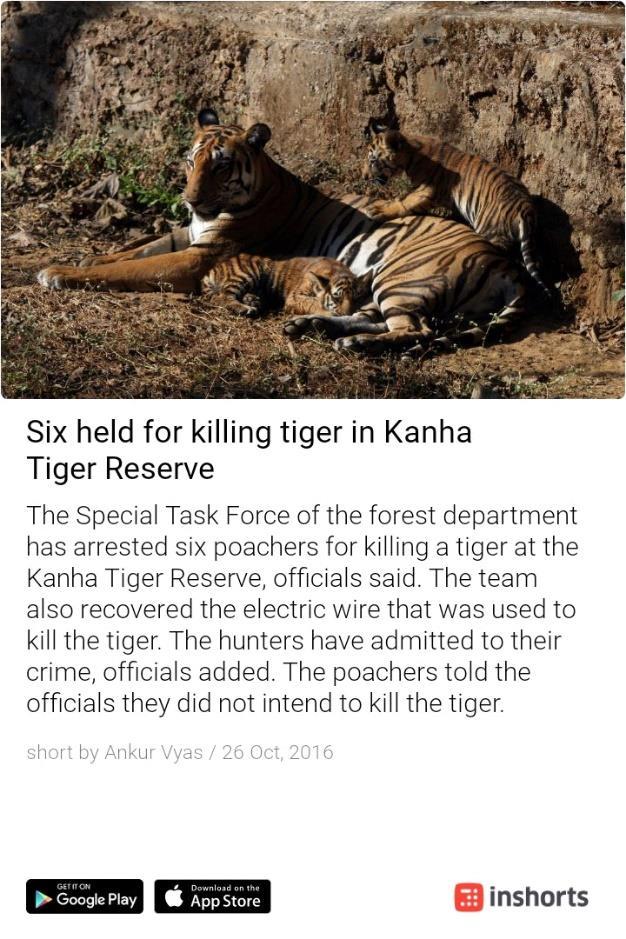
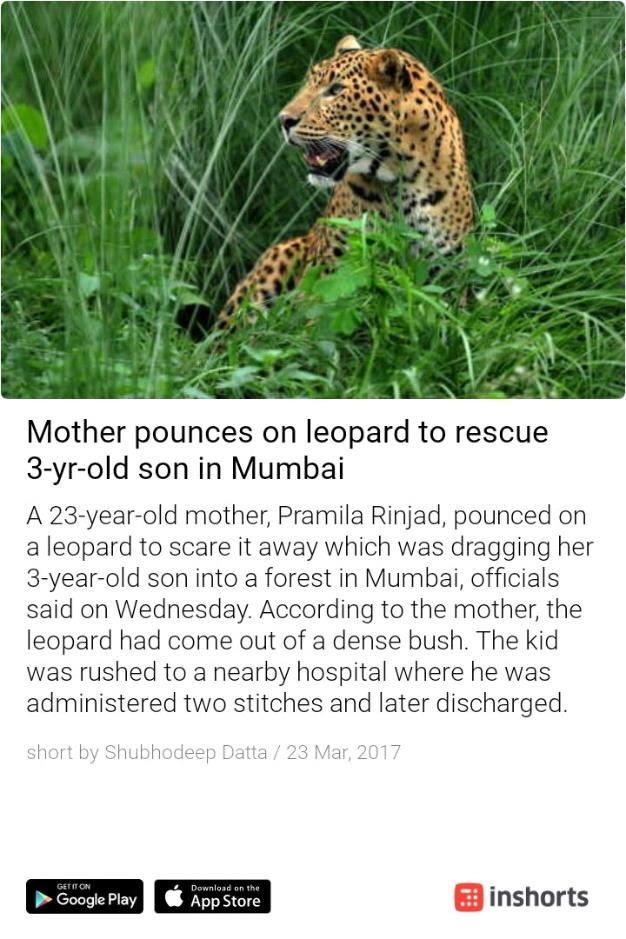
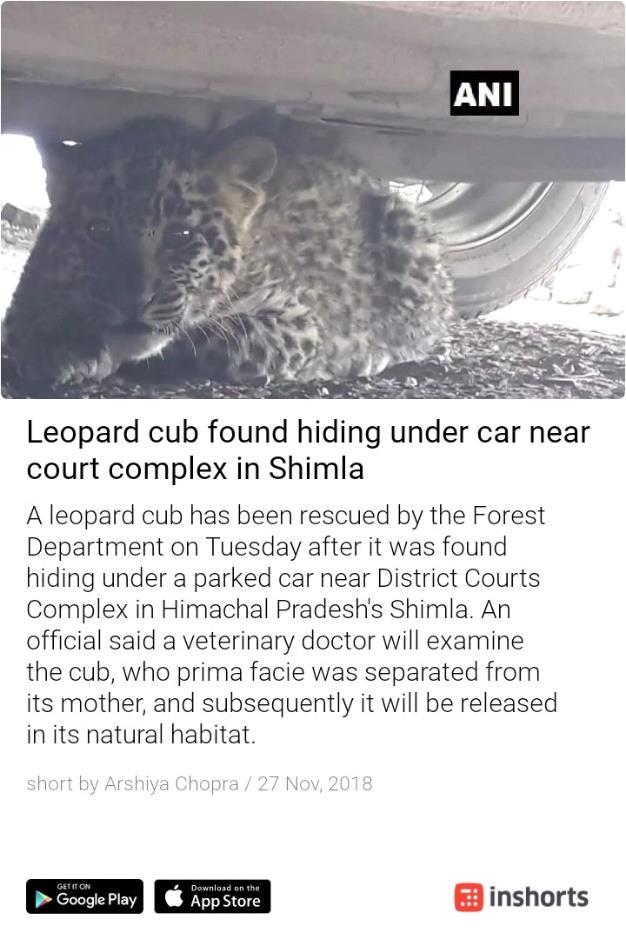
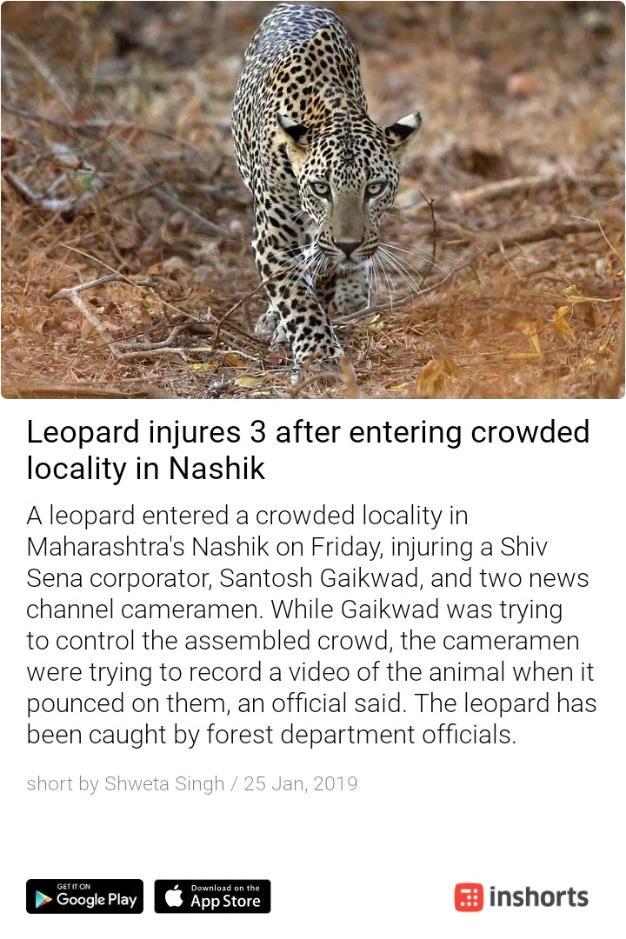

9

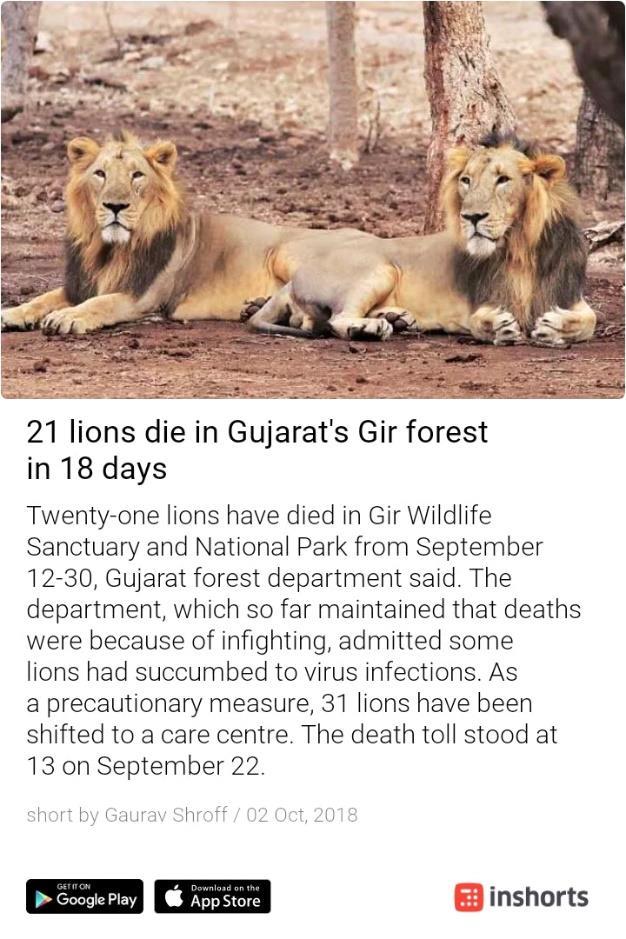



10
3.4 Why Conserve Biodiversity?

Biodiversity is important for maintaining the ecological functions like maintaining the balance of water cycle, replenishing the soil fertility, helps in pollination and cross pollination of crops and other vegetation etc As said by Einstein “No more bees, no more pollination, no more plants, no more animals, no more man." "If the bee disappears from the surface of the earth, man would have no more than four years to live."
Conserving the biological diversity leads to conservation of various ecologies which maintains the balance in the food chain as said above how biodiversity provides various services to mankind in the form of food, shelter and forms a base of economy for various people like farmers, fisherfolks, forest dwellers etc.
• “Without biodiversity, there is no future for humanity” said by Prof David Macdonald, at Oxford University.
• Biodiversity has a huge impact on the climatic conditions of the planet. And hence biodiversity is an important thing to study. Loss of biodiversity through human interventions leads to breakage of the small ecological cycles which are present in the nature which disturbs the whole climatic cycle. Like delay of monsoon, heavy floods, unbearable temperature rise during summers etc.
• Medical research field which is also connected to the wellbeing of the human society needs dense biodiversity for research and other purposes like studying wildlife anatomy, physiology and biochemistry other fields of research.
• It is an integral part of culture and identity where a particular biodiversity signifies a place which it belongs to.
11
3.5 How did the concept of Biodiversity Hotspot begin?
The British environmentalist Norman Myers coined the term “Biodiversity Hotspot” in 1988 as a biogeographic region which has an exceptional level of endemic species and which is also on the verge of extinction. In 1990 Myers added a further eight hotspots, including four Mediterranean-type ecosystems. Conservation International (CI) adopted Myer’s hotspot as its institutional blueprint in 1989 and in 1996 the organization re-evaluated the hotspot concept.
According to Conservation International to qualify as a hotspot a region need to meet two criteria
1. First it needs at least 1,500 species of vascular plants (> 0.5% of the world’s total) as endemics,

2. And second it has to have lost at least 70% of its original habitat.
In 1999, CI identified 25 hotspots and in 2005 CI published an updated 35 biodiversity hotspot
Biodiversity Hotspots in the world

12
Figure 1 : Map indicating world’s 35 hotspots
3.6 Organization which conserve biodiversity hotspots Internationally
• Critical Ecosystem Partnership Fund is a global program that provides funding and technical assistance to nongovernmental organizations and participation to protect the Earth's richest regions of plant and animal diversity including: biodiversity hotspots, high-biodiversity wilderness areas and important marine regions

• World Wide Fund has derived a system called the "Global 200 Ecoregions", the aim of which is to select priority Ecoregions for conservation within each of 14 terrestrial, 3 freshwater, and 4 marine habitat types. They are chosen for their species richness, endemism, taxonomic uniqueness, unusual ecological or evolutionary phenomena, and global rarity. All biodiversity hotspots contain at least one Global 200 Ecoregion
• Plantlife coordinates several the world aiming to identify important plant area.


• Birdlife International has identified 218 “Endemic Bird Areas” (EBAs) each of which hold two or more bird species found nowhere else. Birdlife International has identified more than 11,000 Important Bird Areas all over the world.
• Alliance for Zero Extinction is an initiative of many scientific organizations and conservation groups who co-operate to focus on the most threatened endemic species of the world. They have identified 595 sites, including many Birdlife’s Important Bird Areas


• National Geographic Society has prepared a world mapof the hotspots and ArcView shapefile and metadata for the Biodiversity Hotspotsincluding details of the individual endangered fauna in each hotspot, which is available from Conservation International


13
3.7 The major biodiversity hotspots in India

The hills are present along the western edge of peninsular India. Around 77% of the amphibians and 62% of the reptiles found here cannot be spotted elsewhere in the world. There are more than 6000 vascular plants which belongs to more than 2500 genus. 3000 plants out of these are endemic. The region is also home to around 450 species of birds, 140 mammals, 260 reptiles and 175 amphibians. It is 56,825 sq km area spread over six states Gujarat, Maharashtra, Goa, Karnataka, Kerala and Tamil Nadu.

14
Figure 2 : Map indicating India’s 4 hotspots
a) The Western Ghats (UNESCO World Heritage Site)
b) Himalaya
Includes the entire Indian Himalayan region (and that falling in Pakistan, Tibet, Nepal, Bhutan, China and Myanmar).There are almost 163 endangered species in this region including one-horned rhinoceros, wild Asian water buffalo and as many as 45 mammals, 50 birds, 12 amphibians, 17 reptiles, 3 invertebrate and 36 plant species. There are 10,000 species of plants in the Himalayas a third of which are endemic and cannot be located anywhere else in the world. Threatened species which are found here are Cheer pheasant, Western Tragopan, Himalayan quail, Himalayan vulture, White-bellied heron,siatic wild dogs, sloth bears, snow leopard, black bear, blue sheep and wild water buffalo. Namdapha flying squirrel.

c) Indo-Burma
Includes entire North-eastern India, except Assam (and Myanmar, Thailand, Vietnam, Laos, Cambodia and southern China).Six species of mammals which can be found here are large-antlered muntjac, Annamite Muntjac, gray-shanked douc, leaf deer, saola and Annamite striped rabbit,1300 species of birds too can be spotted here including the white-eared night-heron, Gary-crowned crocias, and orange necked Patridge most of which are endangered.
d) Sundalands
This region lies in South-East Asia and includes Thailand, Singapore, Indonesia, Brunei, and Malaysia. The Andaman & Nicobar Islands represent India. These islands were declared as the world biosphere reserve in 2013 by the United Nations. These islands have a rich terrestrial as well as marine ecosystem including mangroves, seagrass beds, and coral reefs. Species such as dolphins, whales, turtles, crocodiles, fishes, prawns, lobsters and seashells comprise the marine biodiversity.
15
3.8 Existing Forest cover in India



16
Figure 3 : Forest cover in India
3.9 Existing Forest cover in Maharashtra


Ahmednagar Akola Amravati Aurangabad Bhandara
Beed MumbaiCity MumbaiSubUrban Buldhana Chandrapur
Dhule Gadchiroli Gondia Hingoli Jalgaon
Jalna Raigarh Kolhapur RatnagiriH SindhudurgH
ThaneT
17
286 322 3187 557 891 175 2 120 589 4074 321 10095 2011 104 1185 65 2864 1775 4198 2568 2912 0 2000 4000 6000 8000 10000 12000 2007-2013 Area in km 2 Year Forest
Maharashtra
Figure 4 : Map showing Forest Cover in Maharashtra
coverin
Figure 5 : Forest cover comparison in Maharashtra
3.10 Hotspots in Mumbai


Mumbai is financial capital of India and capital of Maharashtra. It is situated in a biodiversity hotspot of northern Western Ghats of Maharashtra, India. The forest area is located in the middle of metropolitan Mumbai city. It is among the rarest of national parks (SGNP), surrounded on three sides by one of the densest cities on the planet. The national park covers nearly ¼ of Mumbai’s land area which is 104 sq km. It is a hilly area contains two major lakes Tulsi Lake and Vihar Lake within its boundaries as well as source of Dahisar & Mithi River Mumbai is a great example of how rich biodiversity can exist in cities, which has more than 1000 species of plants, Dense semi-evergreen forests 318 species of trees (50% of which are exotics), 1300 species of flowering plants,400 plus species of birds, and 40 species of mammals, 62 species of reptiles and 14 species of amphibians, 172 species of butterflies, 17 bat species as well as 10 coastline mangrove species were reported in this area and more than 1,000 other species of flora and fauna
Mumbai has one of the largest protected urban areas in the world called Sanjay Gandhi National Park and it has one of the highest leopard density in India.

18
Figure 6 : Hotspots in Mumbai
a) Sanjay Gandhi National Park (SGNP)
• Butterfly species: Common Jezebel, Baronet, Yamfly, Monkey Puzzle, Blue Mormon, Common Leopard, Common Wanderer, Common Bluebottle, Glassy Tiger, Tawny Rajah, Psyche and Great Orange Tip.
• Flowers: Fox Brush Orchid, Hill Turmeric, Glory Lily, Common Marsh Buckwheat, Wild Lady Finger, Screw Fruit Bush, Common Balsam, Smithia, Jungle Flame, Graham’s Groundsel (Sonki), Hill Blepharis, Common Conehead and Forest Barleria.
b) Mangroves and Forests
• Snakes: Dog Faced water snake, Wart Snake (file Snake), Indian Rat Snake, Checkered Keelback, Buff Striped Keelback, Cobra among many others are found at various parts of the city. Dog Faced water snake and Wart Snake (file snake) are estuary snakes meaning, they are found close to mangrove areas across Mumbai. Other places to sight snakes in the city are SGNP, Aarey forests and MNP.
c) Aarey

• Bird species: Pied Starling, Red-whiskered Bulbul, Black Drongo, Indian Peafowl, Cattle Egret, Indian Robin, Black Redstart and Green Bee-eater.
• Butterfly species: Common Rose, Lime Butterfly, Common Sailer, Danaid Eggfly, Common Crow and Common Palmfly.
• Flowers: Commelina, Cat ears, Indian Sweet Pea, Giant Milkweed, Indian Borage, Yellow-Berried Nightshade and Oriental Sesame.
d) Maharashtra Nature Park (MNP)
• Bird species: Black-winged Stilt, Purple-rumped Sunbird, Spotted Owlet, Great Egret.
• Butterfly species: Black Rajah, Common Emigrant, Blue Oakleaf, Plum Judy, Chocolate Pansy, Red Pierrot and Tailed Jay.
• Flowers: Touch-me-not, Common Lantana, Jamaican Blue Spike and Silver Cockscomb
e) Elephanta Island
• Bird species: Brown-headed Gull and Black-headed Gulls, during the boat ride birds like Greater Black-headed Gull, Heuglin’s Gull, Gull-billed Tern, Caspian Tern Little Term, Common Sandpier, Eurasian Curlew, Whimbrel, Leser and Greater Sandplover, Terek Sandpiper, Ruddy Turnstone, Common Redshank, Black-tailed Godwit, White-bellied Sea Eagle, Little Stint, Orange Minivet, Black-rumped Flameback, Paradise Flycatcher, Tickell’s Blue Flycatcher, and Common Chiffchaff.
19
f) Powai Lake and IIT campus
• Bird species: Indian Pond Heron, Little Egret, Little Cormorant, Purple Swamphen, Black Kite, Coppersmith Barbet and Shikra.
g) Palm Beach Road
• Bird species: Greater Flamingo, Lesser Flamingo, Painted Stork, Booted Eagle, Osprey, Caspian Tern, Broad-billed Sandpiper, Dunlin, Curlew Sandpiper, Lesser Whitethroat, Common Greenshank, Green Sandpiper and Wood Sandpiper.
h) Raj Bhavan
• Bird species: Rose-ringed Parakeet, Common Myna, Oriental White-eye, Oriental Magpie-robin, Eurasian Wryneck, Red-vented Bulbul, Common Tailorbird and Indian Grey Hornbill.
i) Bhandup Pumping Station
• Bird species: Eurasian Spoonbill, Grey Heron, White-cheeked Bulbul, Indian Silverbill, Greater Coucal, Grey Francolin, Indian Spotbill, Western Reef Egret, Common Kingfisher and Red Avadavat.
j) Mahalaxmi Race Course
• Bird species: Plain Prinia, Blyth’s Reed Warbler, White Wagtail, Pied Starling, Indian Roller, Golden Oriole, Long-tailed Shirke- and Common Stonechat.
k) Ranibaug
• Butterfly species: Common Emigrant, Common Gull, Striped Tiger and Blue Tiger.

l) Mahul, Sewri, Palm Beach Road and Thane Creek
• Flamingos: Lesser Flamingos and Greater Flamingos in thousands are seen in the mudflats of Sewri and Mahul and Palm Beach
m) Chhatrapati Shivaji Maharaj Vastu Sangrahalaya and Jijamata Udyaan
• Bats: A huge colony of fruit eating bats also known as Flying Fox roost at Jijamata Udyaan, Byculla. Another colony is at Chhatrapati Shivaji Maharaj Vastu Sangrahalaya, right behind the head office of Bombay Natural History Society
(Inputs from naturalist Rahulratan Chauhan and ornithologist Asif Khan from Bombay Natural History Society)
20







































